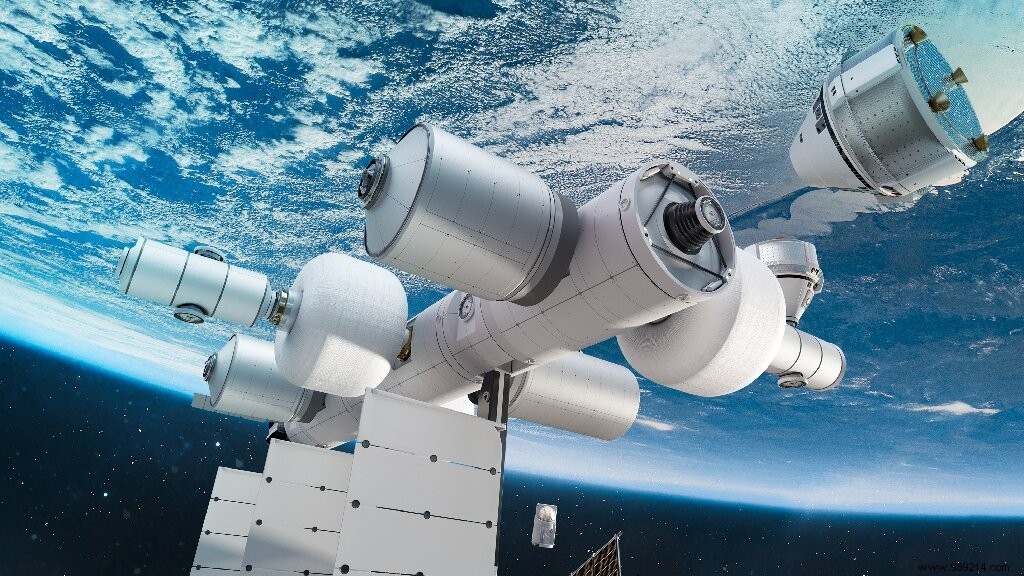Blue Origin and Sierra Space Corporation recently announced plans to build an orbital space station. Named Orbital reef, the structure should evolve at an altitude of 500 km and will be able to accommodate up to ten people. According to the two companies, it will be operational during “ the second half of the decade ” .
With the ISS set to be scrapped by the end of the decade, many private companies see it as an opportunity to secure a permanent American human presence in space. Developed by the trio of companies Lockheed Martin, Nanoracks and Voyager Space, the Starlab station will be put into orbit in 2027. The company Axiom Space has also planned to graft several of its modules to the ISS during the decade, before finally s to emancipate to evolve independently. But they are not the only ones.
Indeed, Blue Origin , in collaboration with Sierra Space , based in Colorado, is also on the job. The two companies announced on Monday that they want to build a private station that can accommodate up to ten people at an altitude of more than 500 km, slightly above the ISS.
“For more than sixty years, NASA and other space agencies have been developing orbital spaceflight and space habitation, preparing us for takeoff in commercial business during of this decade" , said Brent Sherwood, director of Blue Origin. “We will expand access, reduce costs and provide all the services and equipment needed to standardize spaceflight” .

According to the press release, the 830 m3 structure (slightly smaller than the ISS) could be operational for "the second half of the decade" . Named "Orbital reef", it is described as a "business park" intended to accommodate multiple customers.
“Experienced space agencies, high-tech consortia, nations without a space program, media and travel agencies, subsidized entrepreneurs and inventors, forward-looking investors, all have their place" on board, the companies listed in their statement.
As part of this partnership, Blue Origin will develop core modules and utility systems, as well as launch services using its New Glenn rocket (still in progress of development). Sierra Space, as the "lead partner" in the effort, will help design an inflatable module called LIFE. His Dream Chaser cargo space plane will also be there. A crewed version is also planned.
The project also benefits from the support of Arizona State University, but also from Boeing, which will be in charge of the scientific module. The company will also provide the "taxi" to reach this station:its Starliner capsule. Remember that this vessel, which competes with SpaceX's Crew Dragon capsule to transport astronauts to the ISS, has still not solved its technical problems. For his reasons, the first operational flight of the Starliner is now scheduled for next year.